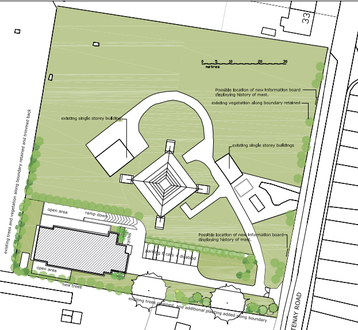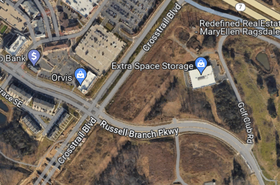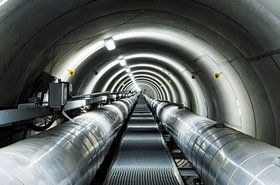A company proposes developing a data center in the shadow of a WWII RAF radar mast in Dunkirk, Kent, UK.
As reported by Kent Online, Origin Power Services and Woodlands Investment Management Limited are requesting to remove several containers and a brick toilet building to develop a two-story data center on an approximately 2,785 sqm (30,000 sq ft) plot on Courtenay Road.
Site plans suggest the facility will feature capacity for 200 racks across more than 340 sqm (3,660 sq ft). The site will feature evaporative cooling. A plant room will be developed at basement level. No end user was named.
According to the application with Swale Borough Council, the design “takes inspiration from the site’s military history and buildings of that era whilst taking the form of a modern building.” The building will use grey aluminum windows and be finished in a grey/green render.
“The design of the proposed building seeks to blend with the utilitarian form of the existing and former buildings and the overall character of the site,” the application notes. Development would have to begin within three years of approval.
Previous applications for the building were rejected in 2013 and 2015, but finally granted in 2018 after concerns relating to noise, ecology, heritage, and archaeology were addressed. However, planning permission had expired, leading Origin to file for planning permission again with a largely unchanged proposal.
A November 9 report to the Swale planning committee recommends delegation to the Head of Planning to grant planning permission –subject to appropriate safeguarding conditions.
However, Dunkirk Parish Council has suggested further investigations are made regarding potential noise impact. Residents have previously opposed the plans.
The site is adjacent to and previously formed part of the RAF Dunkirk Chain Home Radar Station. Dunkirk was the third ‘East Coast’ Chain Home station to be constructed around 1937 (after Swingate at Dover) to provide long-range radar early warning for the Thames estuary and the southeastern approaches to London.
Sat on some 30 acres, there were originally four steel 360ft high transmitting towers and five small timber towers. The site was bombed early in WWII but survived. The Chain Home sites were essential during the Battle for Britain and the Blitz, and were equipped with several anti-aircraft guns for protection.
The site was closed around 1955 and most of the towers were demolished and sold for scrap. Today, only one remaining transmitter tower remains on a 2.3-acre plot, and is reportedly still used for communications – previously by the US Airforce during the Cold War and reportedly Orange for telecoms in more recent times.
Dunkirk is one of only five sites to have retained any of their original towers and is Grade II listed and a Scheduled Monument. Defence Estates, part of the Ministry of Defence, put this mast and the compound up for sale in 2008, and then was up for auction in 2012.
Historic England said it supports the application on heritage grounds, and the proposal does not harm the RAF site's significance.
Little information about Origin Power Services is available. The company has previously tried to develop a solar farm in Stanford-le-Hope in Thurrock.
The company said the site’s close proximity to the A2/M2 corridor, which has a fiber optic cable linking the site to central London, makes it “uniquely suitable” for a data center. Likewise, the application suggests the tower – with its direct line of sight to London – can be used for wireless data transfer.
“The proposed data storage center would be dependent on the continued existence of the listed mast to enable wireless data transfer, and to that extent, the development should help to sustain maintenance of the mast,” the planning committee report notes. “The development is justified on its own merits due to the suitability of the location for telecommunications-based development.
“The IT functionality and the mid-20th Century aspirations of the architectural language are not at odds with the historic character of the listed building. These IT communication systems reflect something of the historic use of the RAF mast.”
The possibility of using the new building partly as a museum to explain the historical importance of the mast during WW2 was previously explored in the 2015 application, but the number of likely visitors were thought to be too low to justify.
Large display boards facing Courtenay Road are proposed at the North and South ends of the site to provide a narrative of the history of the site.







